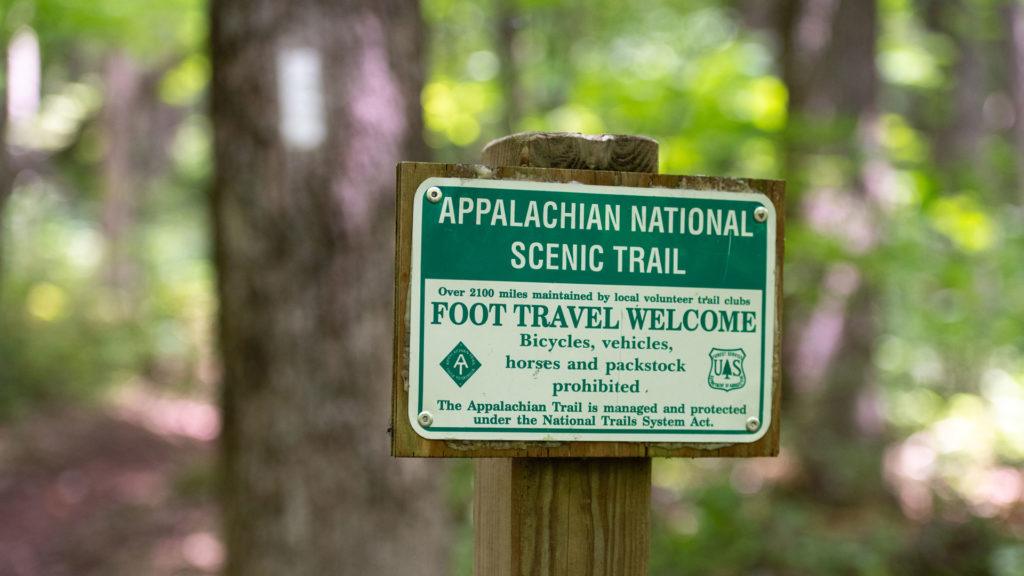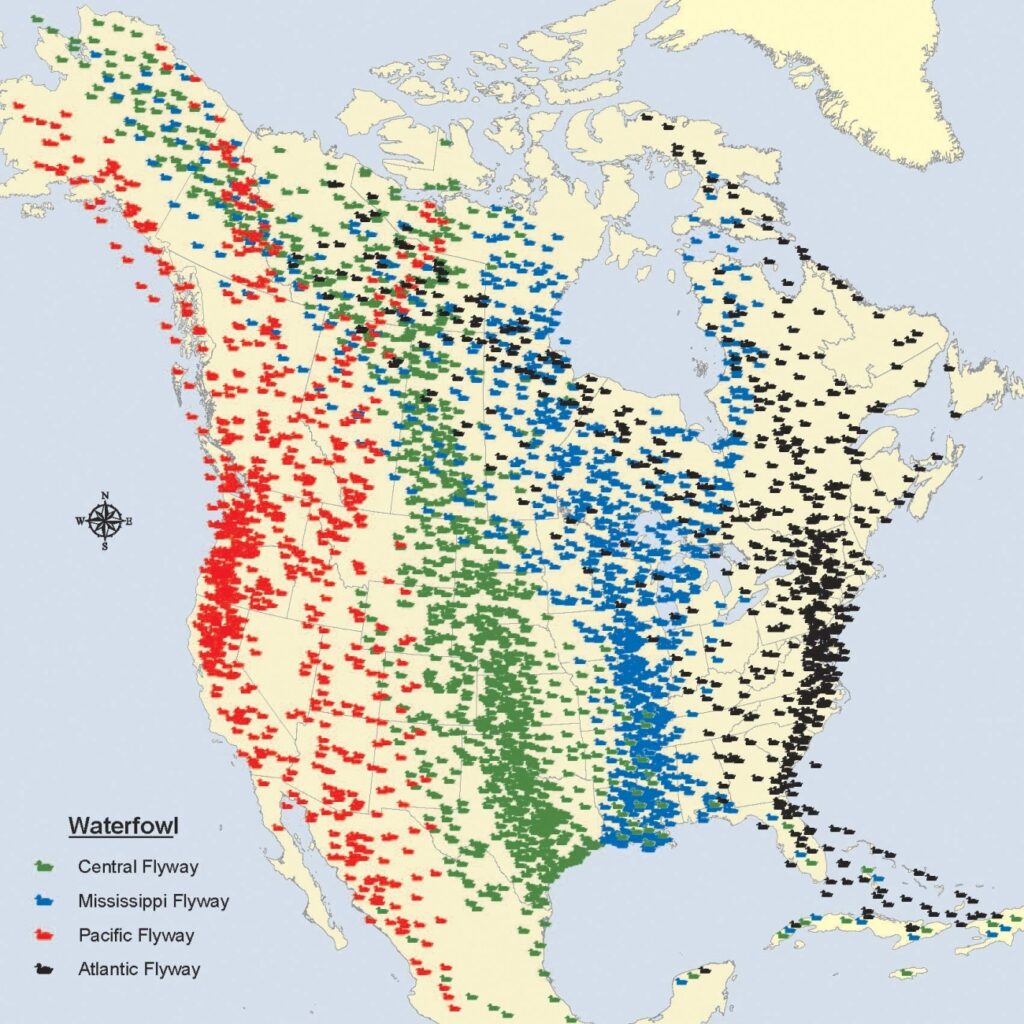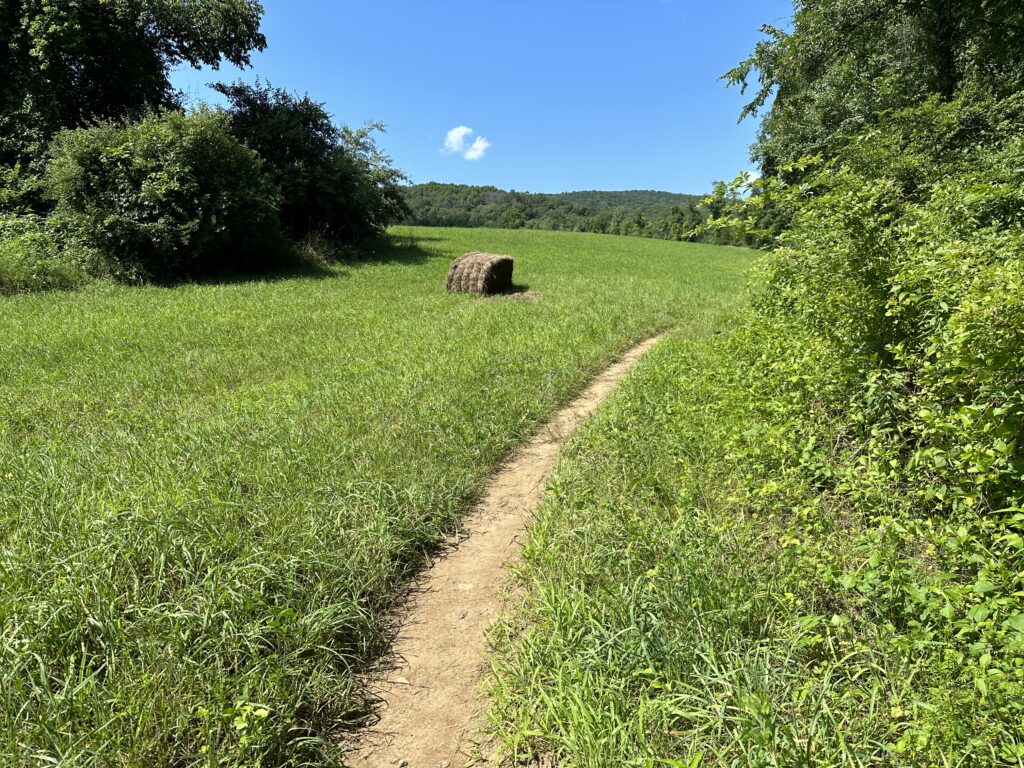By Katie Allen, ATC Director of Landscape Conservation
Layers of Connection: Why Landscape Conservation Matters
May 1, 2025
The Appalachian Trail Conservancy has a leading and evolving role with the Appalachian Trail Landscape Partnership (ATLP). Last week, the ATLP celebrated its 10th Anniversary with an inspiring Annual Partner Meeting in Roanoke, Virginia. This milestone reflects a decade of collaboration, innovation and deepening trust among hundreds of partnerships working to conserve the irreplaceable landscapes surrounding the Appalachian Trail.

Unifying a Landscape: Connecting & Protecting the Realm
The Appalachian Trail Conservancy (ATC) is more than just a steward of the world-renowned Appalachian Trail; it unites the expansive landscape in a conservation strategy that supports and protects the hiker experience, the ecological corridor, and the unique identity of nearby communities.
As a unifier, the ATC is at the forefront of efforts to safeguard the Trail’s natural resilience, ensuring that forests, wildlife, and waterways are safe, improved, and maintained beyond the Trail and knitting together a large landscape fabric of private and public lands and communities, large and small.
This effort is led by our Landscape Conservation Program that is building a focused strategy to bring together diverse stakeholders—such as government agencies, nonprofits, landowners, communities, and businesses—in collaboration to protect, manage, and improve large-scale ecosystems and nature based economic development across political and geographical boundaries.
This approach to conservation is fundamentally necessary to the Trail and hiker experience because preserving the treadway and narrow Trail corridor is not enough. It is in this work that we revisit the original A.T. concept as penned by Benton MacKaye: “…A realm and not merely a trail marks the full aim of our efforts.”
Defining the 21st Century Realm
Throughout the one hundred years after Benton MacKaye penned his vision for the Appalachian Trail— one that provides “a better, wider place in which to live a better, wider life,” —the Appalachian Trail landscape has been the center of study for biodiversity, cultural and historic resources, unique habitats and more. But only over the last decades has it been amplified as a global conservation priority, anchored by the exceptional natural resource and one of our nation’s most successful conservation projects that is the Appalachian Trail.

The “realm” in 21st Century terms is the vast corridor of land beyond the A.T. treadway and its 1,000-foot protected corridor, that includes a suite of valuable physical and biological resources and miles of scenic viewsheds across public and privately held lands. In fact, the A.T. is one of the most biodiverse units of the National Park System, protecting 1,845 known populations of rare, threatened, and endangered plant and animal species.
As a stronghold for biodiversity in the East, the A.T. protects areas of important climate refugia as well as opportunities for unimpeded movement between high value habitats. The A.T. is the spine of the Atlantic Flyway, the most significant migratory pathway in the eastern U.S., linking 31 global, continental, and state Important Bird Areas.

Image courtesy of the North Dakota Game and Fish Department.
Though the A.T. helps protect the highest elevations of the Appalachian Mountain chain from north to south, it is the expansion of protection downslope that keeps this unique system intact. Picture the headwater streams and springs protected all across the 236 watersheds the A.T. intersects. As that water flows downstream, it is the vital protection of waterways and forests that maintain clean water for over 119 million people. A natural filtration and delivery system, through dense forest cores, which also helps to generate clean air and erosion protection during flood events, like those seen during Hurricane Helene in the Southern Appalachians.
In the 21st Century, this is also a landscape of people—communities with rich cultures and histories. Outdoor recreation and tourism have also become foundational to Appalachian communities, a $168 billion industry in the states the A.T. traverses. There is perhaps no other geography on earth so rich with biodiversity and the culture and history of people, with expansive public access to explore both.

South Fork of the Shenandoah River Kayaking by Joshua Gooden.
Finding the Secret Sauce to Scaling Up: Trust and Innovation
The core focus of the ATC’s landscape conservation work has been defined with the help of over 200 partners through the convening power of partnerships, led in collaboration with ATC: the ATLP, the South Mountain Partnership, and the Northern Appalachian Trail Landscape Partnership.
Like how Appalachian Trail Maintaining Clubs manage the Trail in regions, there are groups of conservation-minded experts working to preserve and promote large landscapes along the Trail. Boundaries are defined beyond the bounds of the Trail and instead by watersheds, critical ecological values, and the scenic viewsheds of the of the landscape. This work continues to build on the efforts to establish the Trail and to engage more partners in the protection and connection of the Appalachian Trail Landscape.
The Landscape Conservation team is building upon the ATC’s Cooperative Management System that has evolved to maintain and manage the Trail alongside A.T. Clubs, land management agencies, and many additional supporters and volunteers. The next 100 years of the ATC’s work will place importance on a continued evolution of stewardship beyond the treadway and protected corridor of the A.T.
- One that knits together a complex network of public and private lands, expansive scenic views, cultural resources, critical plant and animal habitats, and streams and rivers.
- One that builds relationships in trust and innovation with a community of conservationists, government agencies, academic institutions, and folks that live, work, and play across this greater landscape.
This trust-based, partner-driven approach has already yielded tangible impacts. The Wild East Action Fund established by ATC in service to the partners of the ATLP, for example, has catalyzed grassroots conservation by providing over $2 million in grants to more than 40 local and regional organizations since its inception. The fund has supported projects ranging from riparian buffer restoration in Virginia to trail connectivity planning in New Hampshire, leading to over 80,000 acres conserved in the A.T. Landscape. These investments empower partners to lead, demonstrating how innovation can thrive when resources are leveraged, and locally driven efforts are elevated.
Similarly, the South Mountain Partnership’s 2023 State of the Region Report highlights how targeted collaboration has protected over 35,000 acres of working farms, forests, and natural areas in south-central Pennsylvania. The report underscores the value of cross-sector partnerships, data-driven planning, and sustained community engagement—key components of a landscape-scale strategy rooted in trust and shared purpose.
In the northern reaches of the trail, the Northern Appalachian Trail Landscape Partnership has brought together stakeholders from Maine, New Hampshire, Vermont, Connecticut and parts of New York to identify and track projects in high-value conservation areas. The partnership has also focused on building bridges among conservation partners and underserved communities with recreation-based outings across the A.T. Landscape —proving that innovation isn’t just about new technology, but also about new relationships and ways of working.
Together, these efforts exemplify the “secret sauce” of scaling up conservation: building durable trust, investing in local innovation, and empowering a broad coalition of partners to steward the Appalachian Trail Landscape for generations to come.
Protect the Places That Shape Us
The ATC’s Landscape Conservation Program’s core work acknowledges the many layers of importance on the land. The ecological systems like watersheds, forests, and wildlife habitats extend beyond individual properties or local government jurisdictions. It recognizes that nearby historic and cultural places, working farms and forests, and local recreational assets are important, vulnerable, and may be lost. And most of all, it recognizes that to these ecosystems and cultural networks are vital to maintain public, economic, and environmental health at national and global scales, requiring collective action to ensure long-term health and resilience.

Photo by Betty “Magic Feather” McEnaney near Northbound mile 1483.
At the ATC, we have a small team with robust experiences in conservation, community organizing, capacity building, and collaborative facilitation driven by a passion to support the people networks that support our environment. The team lives, works, and recreates in the communities in which we serve and hope to be part of a legacy that keeps these lands alive.
Get Involved
Support our work, and the work of your local regional conservation initiative. Check out ways to give here.
You can also find your local regional conservation initiative here and ask them how you can help. Finally, subscribe to the ATLP newsletter and the South Mountain Partnership newsletter to stay up to date and learn of more ways to join the partnership.
